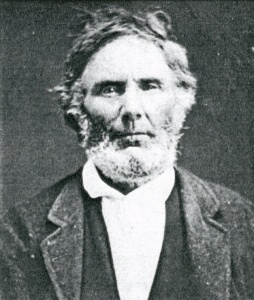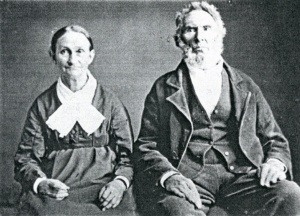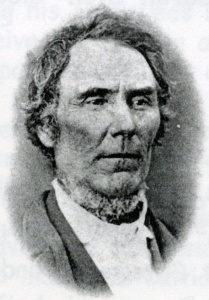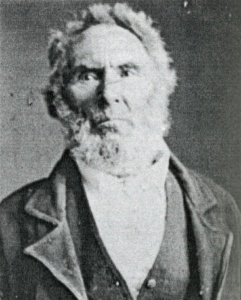Samuel Ridings came from Virginia to Hillsborough in 1833. After one year, he removed to the northeastern part of Clay township, on the Buford survey, number 3368, where he still resides. He married Catherine Ambrose, the daughter of William Ambrose, who came from Virginia in 1816 and settled three miles west of Hillsborough. Catherine was then one year old.
Mr. Ridings, in addition to the labor upon his farm, has been a mechanic. The ability to handle all kinds of tool has led him to hte contruction of farm implements, suck as wagons, buggies, cultivators, grain cradles, rakes, etc. He has also been an undertaker since the time he settled in Clay.
When there has been work to be done which no one seemed able to do, Mr. Ridings has been called on. His hearty hospitality and unassuming ways have won for him the esteem of his fellow men. This has been shown by the local honors which they have conferred upon him from time to time. For 25 years he has been a trustee, and a school director for upwards of 40 years -- supervisor, etc.
He thinks that probably he was "born for an accommodation to others," and the "others" seem to have thought so, too. His family has consisted of twelve children, of whom seven are still living. Of these, four, namely: J.D. Ridings, S. M. Ridings, Jacob E. S. Ridings, and Joseph B. Ridings, live in Clay township.
History of Ross and Highland Counties, Ohio, 1880.
-----------------------------------------
"Samuel and his brother John, arrived in Highland co. in 1833, several years after the AMBROSE family. Both were acomplished iron workers and machinists. John opened a shop in Hillsboro where he made and repaired almost any type of machinery for the early settlers. Samuel opened the same type of shop on the south side of a stream that flowed west of Hollowtown and emptied into a branch of White Oak. His shop was about a mile west of the site of Hollowtown. He manufactured wagons, carriages, ploughs, cultivators, made grain cradles, was a blacksmith and woodworker. He also was an undertaker, and 'kept on hand a number of hand-crafted coffins'. His shop became one of the leading stops on the Underground Railroad. Many a fleeing slave wished he had gone a little farther or maybe a little faster when he was asked to hide in one of 'Sam Riding's coffin-boxes'."
Highland Pioneer Sketches


 Samuel Mathias Ridings
Samuel Mathias Ridings 





 - b.~ 1657 d.28 Nov 1752
- b.~ 1657 d.28 Nov 1752


 - b.~ 1680
- b.~ 1680

 - b.1710 in Tottington, Lancashire, England d.> 1755
- b.1710 in Tottington, Lancashire, England d.> 1755
 - b.26 Nov 1747 in Tottington, Lancashire, England d.04 Jul 1824 in Bolton, Lancashire, England
- b.26 Nov 1747 in Tottington, Lancashire, England d.04 Jul 1824 in Bolton, Lancashire, England

 - b.1710 d.~ 1748 in Tottington, Lancashire, England
- b.1710 d.~ 1748 in Tottington, Lancashire, England - b.28 Jun 1775 in Bolton, Lancashire, England d.Mar 1843 in Middletown, Frederick County, Virginia
- b.28 Jun 1775 in Bolton, Lancashire, England d.Mar 1843 in Middletown, Frederick County, Virginia
 - b.22 May 1756 d.1795
- b.22 May 1756 d.1795
 - b.21 Jul 1778 in St. Helens, Lancashire, England d.06 Nov 1839 in Middletown, Frederick County, Virginia
- b.21 Jul 1778 in St. Helens, Lancashire, England d.06 Nov 1839 in Middletown, Frederick County, Virginia







